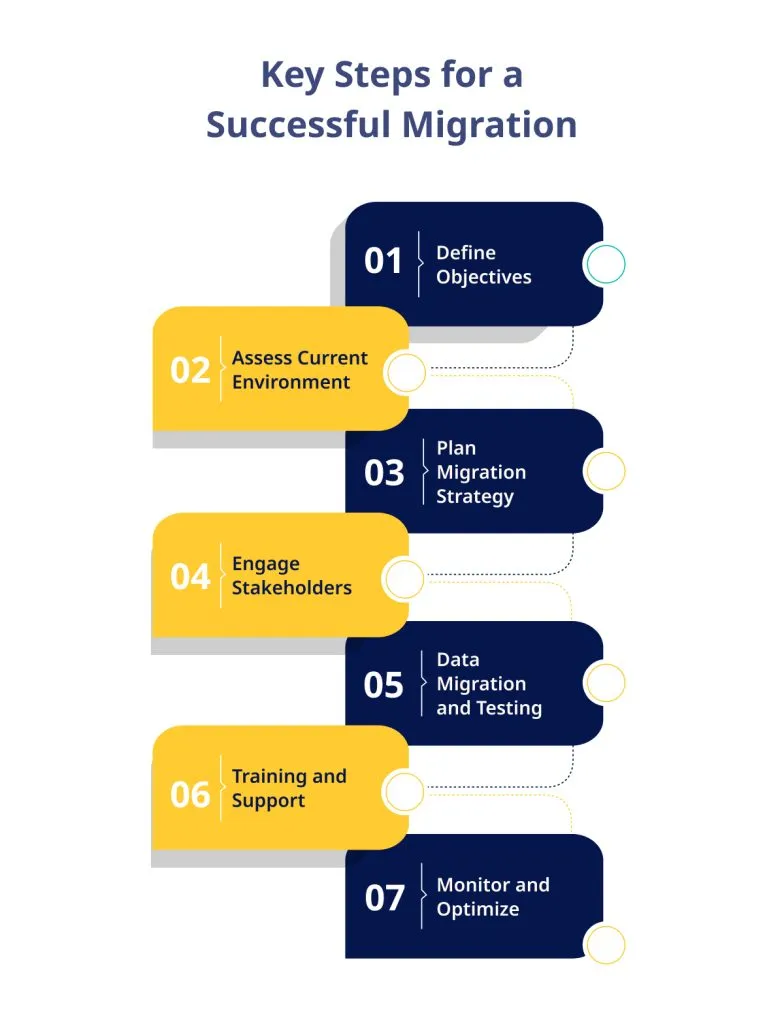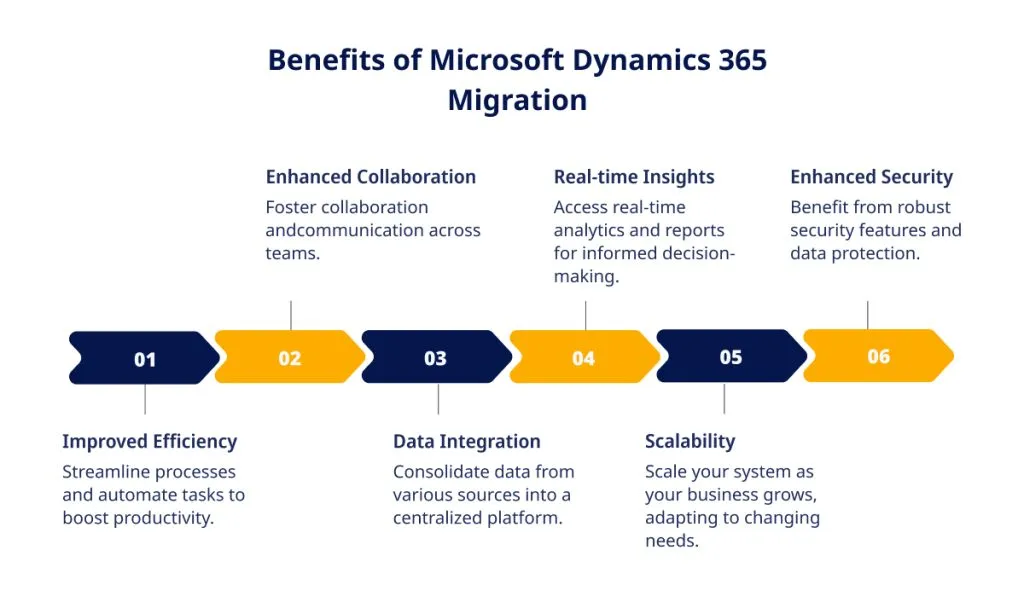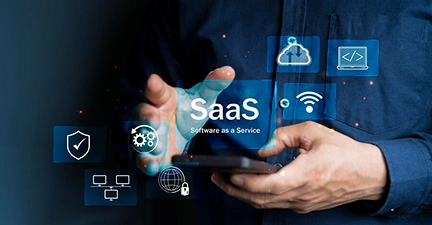Are you considering migrating your business operations to Microsoft Dynamics 365? With a comprehensive suite of tools & features, it’s no wonder that more companies are switching to this platform.
Whether it’s for better customer engagement, streamlined processes, or improved insights, the benefits of this powerful cloud-based platform are undeniable. Microsoft Dynamics 365 Marketing offers businesses an edge in personalizing campaigns and enhancing engagement, making it a valuable tool in the overall suite. However, making the move can be daunting and requires careful planning and execution.
Fear not! In this blog post, we’ve compiled some best practices to help ensure a seamless and secure transition to Microsoft Dynamics 365. From assessing your current system to selecting the right migration approach – we’ve got you covered!
So, read on for expert advice on making your migration journey smooth.
Number of Companies Using Office 365 as of February 2023 (Country-wise)
More than one million companies worldwide use Office 365, with 1,354,969 customers in the United States alone using the Office Suite software.
Pre-Migration Phase
Before setting sail, it is essential to chart your course meticulously. Start by identifying your business requirements and goals and understanding how Microsoft Dynamics 365 aligns with your vision.
Conduct a readiness assessment to evaluate your organization’s preparedness for the migration, identifying any potential roadblocks or areas that require attention. Hire Microsoft customer services and support team if needed but ensure you are well-prepared for the pre-migration phase.
Before reaching the migration stage of Microsoft Dynamics 365, it is crucial to lay a solid foundation during the pre-migration phase. Let’s explore the essential steps to set sail toward a successful migration.
- Identifying Business Requirements & Goals:
Begin by identifying your organization’s business requirements and goals by adopting Microsoft business solutions. Understand the specific challenges you aim to overcome and define the desired outcomes and benefits you expect from the migration.
This understanding will guide the entire migration process, ensuring it aligns with your strategic objectives.
- Conducting a Readiness Assessment:
Assess your organization’s readiness for the migration by evaluating your infrastructure, resources, and processes. Identify any gaps or areas that require attention to ensure a smooth transition. This assessment helps you anticipate potential challenges and prepares you to address them effectively.
- Identifying Data to be Migrated & Mapping Data Fields:
Take stock of your current data and determine what needs to be migrated to Microsoft Dynamics 365, including customer information, product data, financial records, and other relevant data. Check if there is a requirement for Microsoft Dynamics 365 customer service; if yes, collaborate with the best software development company that understands your vision.
Create a comprehensive inventory of the data sources and define the mapping of data fields between the existing system and Microsoft Dynamics 365. This step ensures a seamless transfer of valuable data to the new platform.
- Choosing a Migration Method (Manual or Automated):
Evaluate your organization’s most suitable migration method, considering data volume, complexity, and timeframe. Manual migration involves exporting data from the current system and importing it into Microsoft Dynamics 365.
Automated migration leverages specialized migration tools or services to streamline and automate the transfer process. Carefully weigh the pros & cons of each approach to determine the method that best fits your requirements and resources.
By diligently following these pre-migration steps of identifying business requirements and goals, conducting a readiness assessment, identifying data for migration, and choosing an appropriate migration method, you lay a solid foundation for a successful transition to Microsoft Dynamics 365.
Migration Phase
Plan the migration timeline and sequencing, ensuring minimal disruption to your business operations. Execute the migration process diligently, paying close attention to detail and employing robust data migration tools or services.

Should any issues or errors arise, address them promptly, utilizing troubleshooting techniques and seeking assistance when needed.
Here is the checklist to keep in mind while migrating Microsoft 365 dynamics:
- Data Accuracy
- Functionality
- User Acceptance
- Performance
- Security
- Backup & Disaster Recovery
Get free consultation and let us know your project idea to turn it into an amazing digital product.
Post-Migration Phase: Unleashing the Potential
Congratulations! You’ve successfully traversed the migration phase. However, the journey continues.
Engage in user acceptance testing & training to equip your team with the knowledge and skills to navigate the new system effectively. The post-migration phase is vital for fully capitalizing on the capabilities of this powerful platform.
Let’s explore the key steps to ensure a smooth transition and optimize your system’s performance.
- User Acceptance Testing & Training:
Engage your users in thorough user acceptance testing to validate the functionality and usability of the migrated system. Solicit their feedback and address any concerns or usability issues identified.
Provide comprehensive training sessions to empower your team with the knowledge and skills required to leverage the full potential of Microsoft Dynamics 365 Sales. Ensuring user acceptance and proficiency in Dynamics 365 Sales sets the stage for enhanced productivity and efficiency.
- Implementing Necessary Customizations & Integrations:
Tailor Microsoft Dynamics 365 to your organization’s unique needs by implementing necessary customizations. Consider implementing Microsoft Dynamics 365 CRM Integrations, as it can improve your business efficiency. Leverage the platform’s extensibility to configure workflows, forms, and business processes such as Customer relationship management (CRM) according to your specific requirements.
Integrate with other systems or applications to streamline data flow and enhance cross-functional collaboration. This customization and integration phase empowers you to create a tailored environment that aligns seamlessly with your business processes. For organizations looking to enhance their marketing efforts, Microsoft Dynamics 365 Marketing can be integrated to personalize customer interactions and drive more targeted campaigns.
- Monitoring System Performance & Addressing Issues or Errors:
Monitor the performance of your Microsoft Dynamics 365 system to ensure optimal functionality and responsiveness. Establish proactive monitoring mechanisms to detect any performance bottlenecks or anomalies. Regularly review system logs and metrics to identify potential issues or errors.
Promptly address any identified issues through troubleshooting and, if necessary, seek support from Microsoft or your migration partner. By maintaining a healthy system, you enable uninterrupted operations and user satisfaction.
- Optimizing System Configuration and Settings for Improved Functionality:
Continuously refine and optimize the configuration and settings of Microsoft Dynamics 365 to maximize its functionality. Regularly assess and fine-tune the system parameters, such as security settings, data retention policies, and performance optimizations.
Stay informed about new features, updates, and best practices from Microsoft to leverage the latest advancements in the platform. This optimization ensures that your organization extracts the most value from Microsoft Dynamics 365.
Security Considerations
During the migration to Microsoft Dynamics 365, safeguarding your data’s confidentiality, integrity, and availability is of utmost importance. Adopting robust security measures will help ensure a smooth and secure transition.
Let’s explore some key security considerations for a successful migration & implementation of Microsoft business solutions:
- Ensuring Data Privacy and Protection during Migration: As you migrate sensitive data, it’s crucial to maintain its privacy and protect it from unauthorized access. Use secure data transfer protocols like HTTPS and encryption algorithms to prevent interception and tampering. Apply encryption techniques to safeguard data both in transit and at rest.
- Implementing Access Controls and Security Measures: Control who can access your Microsoft Dynamics 365 environment and its data. Establish robust authentication mechanisms, such as multi-factor authentication, to prevent unauthorized access. Configure role-based access controls, granting appropriate permissions to users based on their responsibilities. Regularly review and update user access privileges to minimize the risk of data breaches.
- Conducting Vulnerability Assessments & Remediation Measures: Regularly assess the security posture of your Microsoft Dynamics 365 environment by conducting vulnerability assessments. Identify potential weaknesses or vulnerabilities and address them promptly. Keep the system up to date with security patches and updates provided by Microsoft to mitigate known vulnerabilities. Establish a robust incident response plan to handle security incidents swiftly and effectively.
- Monitoring & Auditing: Implement real-time monitoring mechanisms to detect and respond to security events. Enable logging and auditing features in Microsoft Dynamics 365 to track and analyze system activities. Review logs and audit trails to identify suspicious behavior. This proactive approach can help identify security incidents early.
- User Awareness and Training: Educate your users about security best practices and their responsibilities in safeguarding data. Train them on identifying and reporting potential security threats, such as phishing attempts or suspicious emails. Foster a security-conscious culture within your organization to reinforce the importance of data protection throughout the migration process.
Remember, security is an ongoing effort. Continuously assess and enhance the security measures of your Microsoft Dynamics 365 environment to adapt to evolving threats and protect your data effectively.
By prioritizing data privacy, implementing access controls, conducting vulnerability assessments, and fostering user awareness, you can ensure a secure migration to Microsoft Dynamics 365. Protecting your valuable assets throughout the process will instill confidence in stakeholders and pave the way for a successful transition to this powerful platform.
Potential Challenges & Solutions During Migration Process
You might face several challenges during the migration process to Microsoft Dynamics 365. While each organization’s situation is unique, here are some common challenges and strategies to overcome them:
- Challenge: Data Integrity
Solution: Maintaining the integrity of data during migration is crucial. Ensure that data is appropriately mapped and validated before the transfer. Implement data cleansing and deduplication techniques to eliminate any inconsistencies or redundancies.
- Challenge: System Compatibility
Solution: Incompatibility between existing systems and Dynamics 365 can pose challenges. Thoroughly analyze integration requirements and assess potential gaps. Develop a comprehensive integration plan, leveraging middleware tools if necessary, to ensure seamless data flow between systems.
- Challenge: Business Process Alignment
Solution: Dynamics 365 offers robust functionality, but aligning it with existing business processes can be complex. Conduct a thorough analysis of your processes and identify areas where customization or configuration may be required. Engage with stakeholders and subject matter experts to ensure the new system supports critical workflows.
- Challenge: User Adoption
Solution: Resistance to change can hinder successful migration. Plan a comprehensive change management strategy, including user training, communication, and engagement activities. Involve key stakeholders early to build buy-in and create a sense of ownership among users.
- Challenge: Data Volume & Performance
Large volumes of data can impact migration speed and system performance. Prioritize data migration based on criticality and establish a phased approach. Conduct performance testing and optimization to ensure the system can handle the anticipated workload.
To overcome these challenges effectively, consider engaging a team of experienced consultants specializing in Dynamics 365 migration.
They can provide guidance, best practices, and technical expertise to navigate potential roadblocks, mitigate risks, and ensure a successful transition.
Partnering with an Experienced Migration Partner
Navigating the vast ocean of Microsoft Dynamics 365 can be overwhelming, especially if you embark alone. That’s where partnering with an experienced migration partner comes into play.
Collaborating with a seasoned professional with in-depth knowledge and expertise in Microsoft Dynamics 365 migrations can significantly enhance the success of your transition.
An experienced migration partner profoundly understands the challenges and problems that can arise during migration. They have successfully navigated through previous migrations, gaining valuable knowledge and expertise.
By leveraging their expertise, you can tap into a wellspring of guidance, advice, and support throughout the migration process. Microsoft Dynamics 365 Consulting services can also provide tailored solutions, ensuring that your organization maximizes the benefits of the platform while addressing specific needs and challenges
Get free consultation and let us know your project idea to turn it into an amazing digital product.
Conclusion
Migrating to Microsoft Dynamics 365 can be a complex process. Still, with the proper best practices, organizations of all sizes can ensure this transition is done seamlessly and securely.
By taking the time to evaluate existing processes and infrastructure, developing an effective data migration strategy for transferring data over to Dynamics 365, and setting up security protocols for protecting your new system, you will be able to make sure that your organization’s move from one platform to another goes as smoothly as possible.






